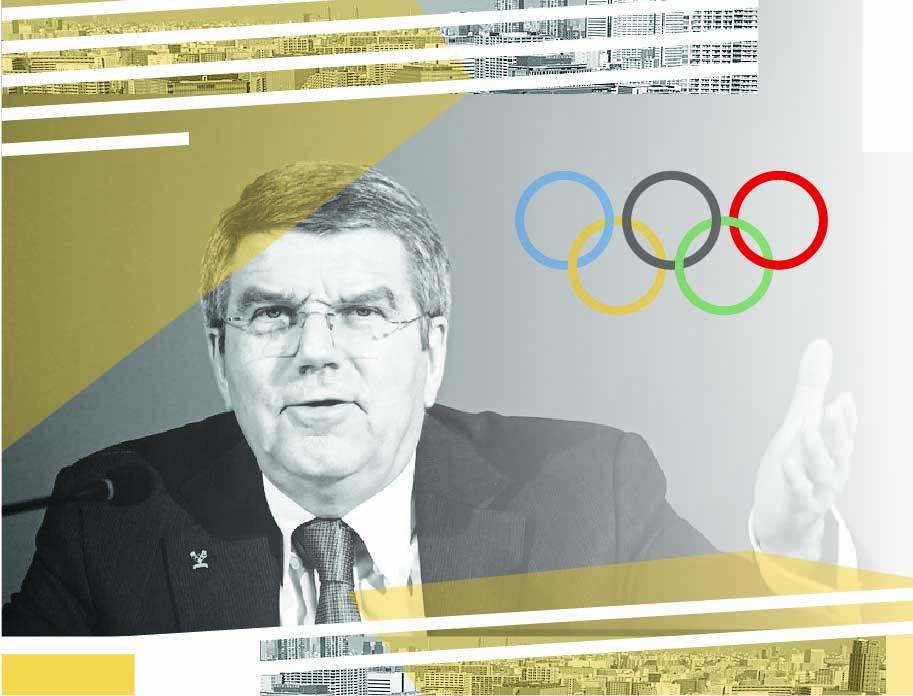
Dr Peter English
Senior Lecturer in Journalism at University of the Sunshine Coast. His research focuses on sports journalism, with an emphasis on its journalists, content, and social media. Peter has worked as a sports journalist for more than two decades.
Twitter: @penglish77

Section 2: Media Coverage & Representation
- Twitter conversations on Indian female athletes in Tokyo
- ”Unity in Diversity” – The varying media representations of female Olympic athletes
- The Olympic Channel: insights on its distinctive role in Tokyo 2020
- How do we truly interpret the Tokyo Olympic ratings?
- Between sexualization and de-sexualization: the representation of female athletes in Tokyo 2020
- Reshaping the Olympics media coverage through innovation
- An Olympic utopia: separating politics and sport. Primary notes after analyzing the opening ceremony media coverage of mainstream Spanish sport newspapers
- What place is this? Tokyo’s made-for-television Olympics
- The paradox of the parade of nations: A South Korean network’s coverage of the opening ceremony at the 2020 Tokyo Olympics
- Why we need to see the “ugly” in women’s sports
- “The gender-equal games” vs “The IOC is failing black women”: narratives of progress and failure of the 2020 Tokyo Olympics
- Ghana: Poor local organizing, and absence of football team dampens interest
- Megan Rapinoe: The scary Bear for many Americans?
- ‘A Games like no other’: The demise of FTA live Olympic sport?
- Temporality of emotionalizing athletes
- Fandom and digital media during the Tokyo 2020 Olympic Games: A Brazilian perspective using @TimeBrasil Twitter data
- Media wins medal for coverage of athletes as people, instead of entertainers
- Media frames and the ‘humanity’ of athletes
- Reporting at a distance. Stricter working conditions and demands on sports journalists during the Olympics
- New Olympic sports: the mediatization of action sports through the Olympic Games 2020 Tokyo
- Simone Biles, journalistic authority, and the ideology of sports news
- Representations of gender in the live broadcast of the Tokyo Olympics
- Americans on ideological left more engaged in Summer Olympics
- Nigeria: Olympic Games a mystery for rural dwellers in Lagos
- National hierarchy in Israeli Olympic discourses
- Equestrian sports in media through hundred Olympic years. A roundtrip from focus to shade and back again?
- Reshaping the superhuman to the super ordinary: The Tokyo Paralympics in Australian broadcasting media
- Is the Paralympic Games a second-class event?
- The fleeting nature of an Olympic meme: Virality and IOC TV rights
- Tokyo 2020: A look through the screen of Brazilian television
- Is the Paralympic Games a second-class event?
- How digital content creators are shaping meanings about world class para-athletes
- How digital content creators are shaping meanings about world class para-athletes
- The male and female sports journalists divide on the Twittersphere during Tokyo 2020
- Super heroes among us: A brief discussion of using the superhero genre to promote Paralympic Games and athletes
- “Everything seemed very complicated”: Journalist experiences of covering the Tokyo 2020 Paralympic Games
- Representing high performance: Brazilian sports journalists and mass communication professionals discuss their philosophies on producing progressive Paralympic coverage
- Representations of gender in media coverage of the Tokyo 2020 Paralympic Games
Since the emergence of television the Olympics have been made for the small screen, but for sports journalists and commentators Tokyo really was the TV Games. Covid, of course, was the main reason for the smaller journalistic presence in Japan, with reporting off the box necessary due to travel restrictions and health complications.
Journalists at previous Olympics have often had the safety net of television for covering – or not missing – key events. At Tokyo 2021, the screen was vital for both the fewer correspondents in Japan, and those watching remotely for publications across the world. As the Olympics began, it appeared to viewers and readers that the reporters and hosts were actually at the events, but as the Games wore on they were more public – or at least less private – in revealing their real locations.
In a series of tweets, Eurosport highlighted its green-screen technique for transporting medal-winning athletes from Tokyo to interviews in Munich and London. The BBC’s studio was in Salford, near Manchester, more than 9000kms from the Games.
Australia’s event commentators for Seven were in Melbourne, describing races off televisions considered tiny in many lounge rooms, instead of sitting live in mostly-empty stands. There were also a small number of reporters across venues for interviews, or color stories, which are usually a major feature of Olympics coverage.
In print and online, the reporting situation was similar to previous Games for reporters in Tokyo inside the ‘media bubble’. But on top of the ‘Olympic bingo’ of stories on medal success, doping accusations and athletes misbehaving – as well as standard security checks – there were daily Covid spit tests, health monitoring and a GPS tracking app.
However, media packs were smaller, with News Corp Australia sending around 30 reporters for its national, state and community publications. The Age and The Sydney Morning Herald, two of Australia’s major mastheads, had only five people in Tokyo. The Guardian assigned five writers and a desk editor from London, a decrease of four staff from Rio, and were supported by a Tokyo correspondent and reporters focusing specifically on US and Australian markets. India’s red-list status as a Covid hotspot reduced the number of journalists from the nation, and the daily health protocols increased the difficulty of coverage.
In Australia, many senior sports journalists did not travel. The Sydney Morning Herald ran a column from its chief sports reporter titled ‘From the futon’, and journalists in Tokyo noted there were many more people working remotely than in previous Olympics.
Another major change was limits to how many reporters could attend the mixed zone, where athletes pass through the media for interviews. In previous Games, Australian news organizations sent up to six journalists to ask questions, but this time were restricted to two ticket holders. Interviews did not occur face-to-face, but across a two-meter gap. While these interactions are usually brief, the conditions provided another barrier for gaining insight into events or moments. Instead, there was a greater reliance on televised quotes from the host broadcasters, rather than a team of reporters requesting extra details from athletes. In Australia, quotes attributed to Seven were frequent in reports and live updates.
Writing off television was essential for the many who could not attend, including for Australian reporters who required two weeks in quarantine when returning home. The Olympic News Service, which provides transcripts of interviews, had previously been limited to journalists at the Olympics, but was opened to news organizations covering the Games, providing access for the many reporters not based in Japan.
Live blogs have become a feature of modern reporting and were a daily staple, both because of the demands of rolling coverage, but also as the cheapest and safest seats in the house. The Guardian’s ‘Minute-by-minute’ blog, building on the style of its popular football and cricket posts, combined online commentary from watching events on television with input from staff writers in Japan. Daily coverage began in Sydney then passed to London and, when required, New York.
For the casual fan, there may not have been a lot different about the coverage compared with Rio 2016. But the smaller on-the-ground reporting pool meant audiences received fewer details, more homogenous content and a reliance on updates from the carefully curated social media feeds of athletes or sports organizations. Competitor comments away from their heavy-breathing post-event interviews were more difficult and highlighted the obstacles of breaking news solely off the television.
Covid has changed the way many sports have been covered, and there is danger in newsrooms and sports organizations thinking this television-centric model can work in the future. By Paris 2024, it is hoped many things will have returned to normal, including more journalists in stadia and mixed zones, and greater access to athletes and events.

